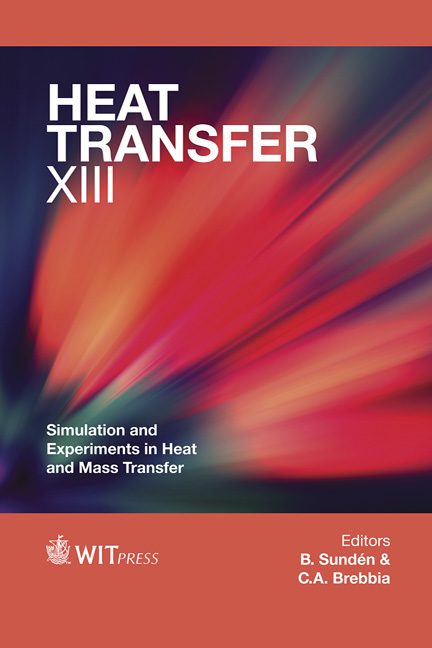The Simulation Of A Rankine Based Waste Heat Recovery System For A Heavy Duty Diesel Engine
Price
Free (open access)
Transaction
Volume
83
Pages
10
Page Range
103 - 112
Published
2014
Size
907 kb
Paper DOI
10.2495/HT140101
Copyright
WIT Press
Author(s)
C. Paz, A. Eirís, J. Porteiro & E. Suarez
Abstract
The enormous amount of waste heat that is rejected through the exhaust system in a modern engine is possibly the main source of energy yet to be converted into power on a conventional internal combustion engine. The groups of technologies exploiting this source of energy are normally called Waste Heat Recovery (WHR) systems. The most promising WHR technology under development is probably the low pressure Rankine cycle employing an organic working fluid. The strong interaction between the WHR system with the exhaust and cooling systems of the engine, combined with the inherent transient nature of the engines employed in transportation, makes the correct design, sizing and construction of its main components especially challenging. In this work, commercial 1-D software is employed to model the recovery system. The system consists of two boilers, one in the main exhaust line and another in the exhaust gas recirculation circuit. These boilers generate high pressure vapour that is expanded to obtain power. The low pressure vapour leaving the expander is used to preheat the high pressure liquid at the exit of the pump, while the cooling system of the engine is used to convert the low pressure, low temperature vapour into liquid in the condenser. Finally, a positive displacement pump is employed to heighten the pressure of the liquid. For this, R245-fa will be used as operating fluid. To build the model of the whole system, specific geometrical and material aspects of each main component are required. This information is based on state-of-the-art equipment and on experimental information available for the calibration of each subsystem. A parametric optimization of the main operational parameters of the WHR, is done to optimize the performance of the different systems and integration with the engine. Finally, the whole system is simulated under different load conditions of the engine to obtain its overall performance. Keywords: Organic Rankine Cycle, automotive waste heat recovery.
Keywords
Organic Rankine Cycle, automotive waste heat recovery.





